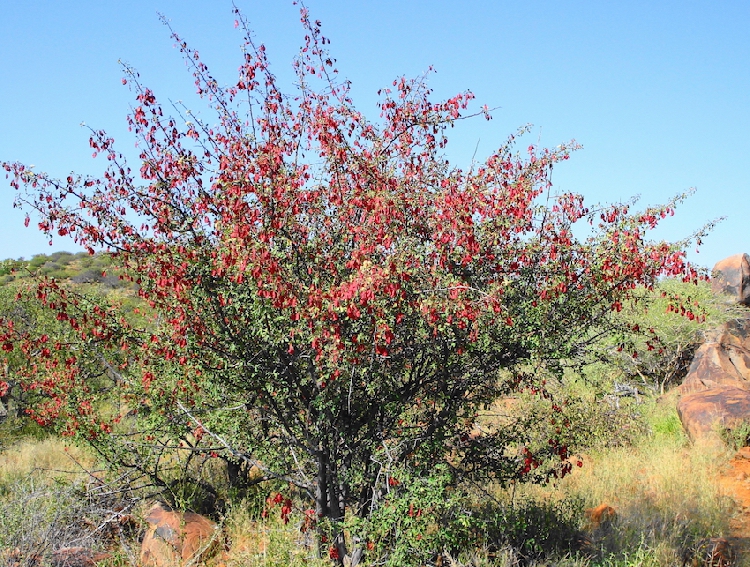• LUISE HOFFMANNPLANTS have botanical or scientific names to distinguish clearly between them internationally and irrespective of the user’s home language.
Common names, although often very descriptive, can be misleading. In Namibia – depending on which language we are speaking – we may have up to eleven different common names for the same plant.
Also, the same tree may be known by a different common name in different parts of the country, i.e. the Afrikaans name ‘slapdoring’ indicates Acacia nebrownii in Etosha, but the same shrub is known as ‘waterdoring’ in southern Namibia.
For medicinal purposes or for identifying edible plants we need to know exactly which plant we are speaking about. Botanical names are also indispensible for identifying protected or endangered trees and for finding information in books or on the internet.
Botanical names are registered in the “International Code of Nomenclature [= names] for algae, fungi and plants”. They usually consist of two parts, e.g. the genus name e.g. ‘Acacia’ for all our trees with thorns arranged in pairs, feathery leaves, ball- or spike-shaped flowers and distinctive pods.
To distinguish between the various Acacia species we use the specific name such as ‘erioloba’ for the camel-thorn tree with its large velvety pods or ‘karroo’ for the sweet thorn with golden-yellow flowers and numerous sickle-shaped pods.
Since Latin and Greek were the languages most scientists were required to use in earlier centuries, many of the botanical names are of Latin or Greek origin. Thus ‘Acacia’ means ‘with thorns’ while ‘erioloba’ refers to the dense, soft hairs on the pods. The specific name ‘karroo’ relates to the Karoo region in South Africa.
Tree names often refer to certain persons important to botany and then frequently end in ‘i’ or ‘ii’, e.g. Maerua schinzii, the ringwood tree, meaning ‘the tree of Dr Schinz’, a name honouring Prof Schinz, a former director of the Zürich botanical garden.
Similarly, there is Commiphora dinteri, or the Namib corkwood of Mr Dinter whose name is commemorated in many botanical names because he collected a very large number of Namibian plants.
The shepherd’s tree, Boscia albitrunca, is named after the French professor L Bosc, while ‘albitrunca’, meaning ‘white trunk’, refers to the trunk that is often very white.
The ending ‘oides’ as in Terminalia prunioides, the purple-pod terminalia [photo], means ‘similar to’ a prune and refers to the colour of the pods. Many species names refer to the region in which the plant occurs, e.g. ‘kaoko-ensis’, ‘namaqu-ensis’, ‘africana’. The leaves of the purple-pod terminalia are crowded around the tip or the terminal – a word familiar from air travel – of the branch, hence the species name Terminalia.
Some trees have longer names, e.g. our well-known swarthaak or blackthorn tree, Acacia mellifera subsp. [= subspecies] detinens. Its flowers are a rich source of nectar, which bees turn into honey, called ‘mellus’ in Latin. ‘Mellifera’ means honey-bearing, while ‘detinens’ as in ‘detain’, to hold, is exactly what the hooked thorns do. Its close relative A. mellifera subsp. mellifera, the Kunene swarthaak, has no thorns but is otherwise quite similar.
In this way, one can often deduct the meaning of botanical names by relating them to English words. I hope that you may now find botanical names somewhat less daunting and I will write more about them in a couple of weeks.
Stay informed with The Namibian – your source for credible journalism. Get in-depth reporting and opinions for
only N$85 a month. Invest in journalism, invest in democracy –
Subscribe Now!






